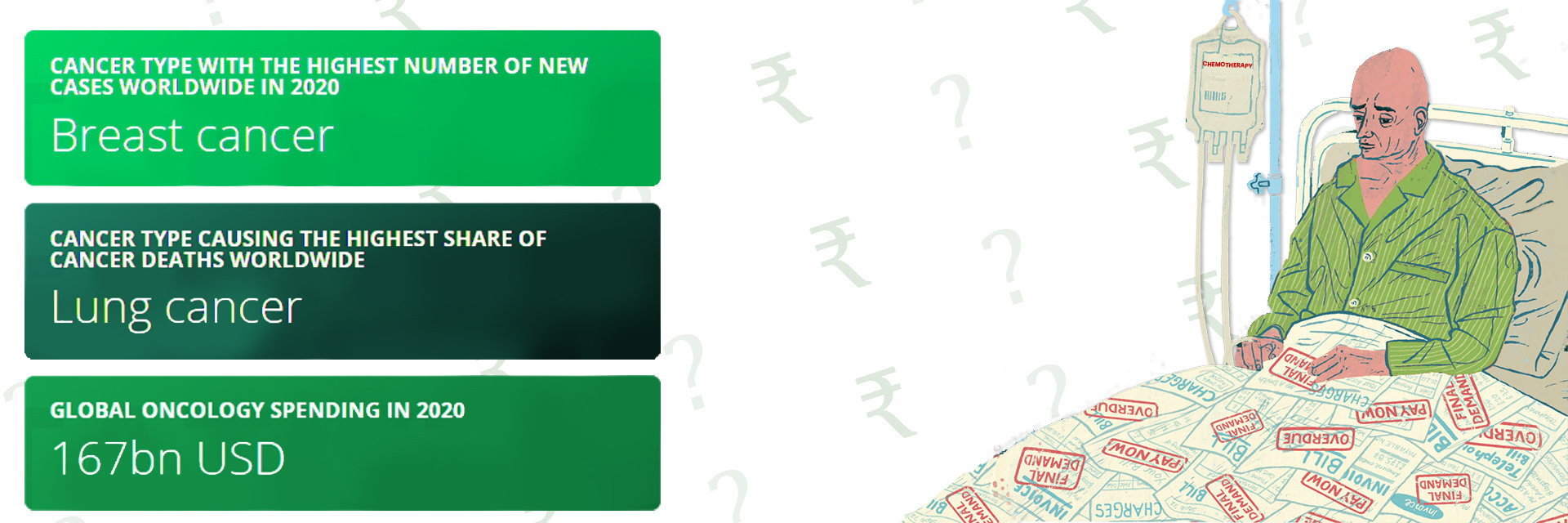A bone marrow transplant represents a medical miracle. It offers a second chance at life to those battling life-threatening diseases like leukemia, lymphoma, or other blood-related disorders. This procedure involves replacing diseased or damaged bone marrow with healthy stem cells. These stem cells have the incredible potential to regenerate and restore the body's blood cells, offering renewed hope for a healthier future.
In this blog post, we will explore the various aspects of life after a bone marrow transplant at the 60 day mark. Let's read ahead to learn more in detail.
Your health is too important to ignore – schedule your appointment now.
What to expect 60 days after bone marrow transplant?

The individuals will still be in the recovery phase 60 days after the bone marrow transplant. Here are a few things that you can expect during this phase:
- Engraftment- By this time, the transplanted stem cells should have successfully settled in the bone marrow. By now it should start producing healthy blood cells.
- Improved blood count- You will see an improved blood count. The new bone marrow will start producing more RBC, WBC, and platelets. However, keep in mind that complete recovery is still a long way.
- Reduced risk of complications- The risk of certain complications like graft versus host disease will reduce.
- Increased energy and strength- Almost 60 days after bone marrow transplant you will start feeling more energized. Your physical health will also improve.
Also, you should remember that the recovery timeline can vary from person to person. 60 days are the usual timeline when most people start observing the positive effects of the surgery.
Let’s have a look at what complications can arise after the transplant!!
Common complications 60 days after bone marrow transplant?

60 days after a bone marrow transplant, there are several complications faced by the patients. The severity of these complications may vary from person to person. They include:
- Graft-versus-host disease (GVHD)- This happens when the transplanted donor cells attack the recipient’s body.
- Infections- Patients are more susceptible to infections. This is due to the weakening of the immune system. Bacterial, viral, and fungal infections are common at this time. They can affect various organs.
- Bleeding or low blood cell counts- The transplant can cause a decrease in blood cell counts. It leads to an increased risk of bleeding and anemia.
- Organ damage- The conditioning regimen used prior to and during the transplant can cause organ damage. Organs like the liver, lungs, or kidneys have a high chance of getting damaged.
- Graft failure or rejection- There can be cases where the transplanted cells may not engraft properly. This leads to the rejection of graft by the recipient's immune system.
- Nutritional challenges- Patients may experience difficulty in absorbing nutrients. This can lead to weight loss and malnutrition.
Read below to find out how much time it takes to recover from the transplant procedure!
Take the first step to recovery. Get in touch with us for your treatment.
How long does it take to recover after a bone marrow transplant?

The recovery period after a bone marrow transplant depends on several factors. The factors include:
- The overall health of the individual
- Type of transplant
- Risk of complications
In general, the full recovery period of a bone marrow transplant is several months to a year.
During the first 30 days after the transplant, one requires close monitoring and frequent follow-ups. This phase focuses on managing the complications or side effects that may arise from the transplant. This is referred to as the “acute phase” of recovery.
After the acute phase, the recovery continues with continuous medical care. There are frequent checkups and therapies during this phase. Almost 60 days after the bone marrow transplant, healthy blood cell production starts. Although, still you may feel fatigue and other side effects at that time.
The immune system gradually recovers in the course of 1 year or so. Meanwhile, all this time you have to get regular monitoring and follow-ups to keep side effects and infections in check.
You would want to join work as soon as possible; read below to find out if that is feasible!
Can I return to work or school 60 days after a bone marrow transplant?

The ability to return to work 60 days after a bone marrow transplant is again person specific. It depends on several factors:
- The overall health of the person
- Kind of transplant
- Specific requirements of the work (whether the job requires physical strength)
Before returning to work it is important that you consult with your doctor about the same. Your recovery progress will determine whether you can return to work. Before returning to work you have to ensure the following things from your doctor:
- Recovery of your immune system
- Stamina recovery
- No risks of any other risk or hazards
A proper diet is required for faster recovery!! Look at what are the dietary restrictions to avoid any complications!
What are the dietary restrictions after a bone marrow transplant?

After a bone marrow transplant, there are dietary restrictions recommended to reduce the risk of infections and complications. The recommendations are personalized based on individual conditions. Here are some common dietary restrictions after a bone marrow transplant:
- Raw and uncooked foods- Any kind of raw or uncooked food is advisable to be avoided.
- These include meat, seafood, eggs, and unpasteurized dairy products. These kinds of products can harbor bacteria, viruses, or parasites. It can increase the risk of infections.
- Unwashed fruits and vegetables- Eat fruits and vegetables after washing them thoroughly. It is also advisable to eat peeled fruits and vegetables as much as possible.
- Deli meats- Meats such as ham, turkey, or roast beef may be contaminated with bacteria called Listeria monocytogenes. It is advisable to avoid these kinds of meat. Even if you eat them, make sure that you heat them until steaming hot.
- Soft cheeses- Soft cheeses like feta, Brie, Camembert, blue cheese, and Mexican-style cheeses contain bacteria called listeria. It is better that you avoid these kinds of cheese.
- Unpasteurized dairy products- Unpasteurized milk, yogurt, and other dairy products have high bacterial contamination. Try to opt for pasteurized products at this time.
- Freshly squeezed juices- Freshly squeezed juices may carry a higher risk of bacterial contamination.
- Salad bars and buffets- These can be sources of foodborne illnesses. Ensure to have food that is kept at an appropriate temperature.
It is important for you to keep in mind that dietary restrictions will vary depending on the particular individual. The medical team will provide detailed instructions and guidelines tailored to each patient's needs.
According to the online healthcare platform welzo -
Alcohol and tobacco use can have negative effects on the immune system and overall health. It is generally advised to avoid consuming alcohol and
smoking tobacco products after a bone marrow transplant. However, specific recommendations may vary based on individual circumstances and the advice of the healthcare team. It is crucial to discuss these lifestyle choices with the healthcare team for personalized guidance.
Your well-being is our priority - call us to book your appointment today
How often will I need to have follow-up appointments after a bone marrow transplant?

The frequency of follow-up treatments after a bone marrow transplant varies. During the initial recovery phase, it is one or two times every week. The appointments involve physical examinations, blood tests, and discussions to manage complications.
With due course of time, the frequency decreases. Almost 60 days after bone marrow transplant the frequency goes to once every month or every few months. These visits are mainly to monitor progress and address side effects.
The schedule depends upon individual needs and conditions.
What are the chances of relapse 60 days after a bone marrow transplant?

The chances of relapse 60 days after a bone marrow transplant can vary depending on several factors. These factors include:
- Type of transplant (autologous or allogeneic)
- The underlying disease
- Individual health factors
The first few months after the transplant are very critical. The chances of relapse during the initial recovery phase are high.
The likelihood of relapse decreases over time as you continue to recover. This is because the engrafted cells have started forming new blood cells and the immune system is recovering.
Is it normal to feel fatigued 60 days after a bone marrow transplant?

Yes, it is normal to experience fatigue 60 days after a bone marrow transplant. Fatigue is a common side effect of the transplant process. This can persist for several months after the transplant. Intensive treatments like chemotherapy and radiation can make you tired and weak. Moreover, the body is still in the recovery phase. The immune system is also rebuilding itself. All of these together can make you feel fatigued. It is important to rest and save energy. You can gradually increase the activity levels as per the doctor’s advice.
What are the signs and symptoms of graft-versus-host disease 60 days after a bone marrow transplant?

GVHD (graft-versus-host disease) can occur 60 days after a bone marrow transplant. It has two types: acute and chronic. Acute GVHD typically occurs within days or up to 6 months after the transplant. It affects the skin, liver, intestines, and immune system.
The symptoms include:
- Abdominal pain
- Nausea
- Vomiting
- Diarrhea
- Jaundice
- Skin rash
- Infection
Chronic GVHD usually starts more than 3 months after the transplant. It can last a lifetime.
The symptoms include:
- Dry eyes and mouth
- Fatigue
- Muscle weakness
- Joint pain
- Skin changes
- Shortness of breath
- Weight loss
References:






